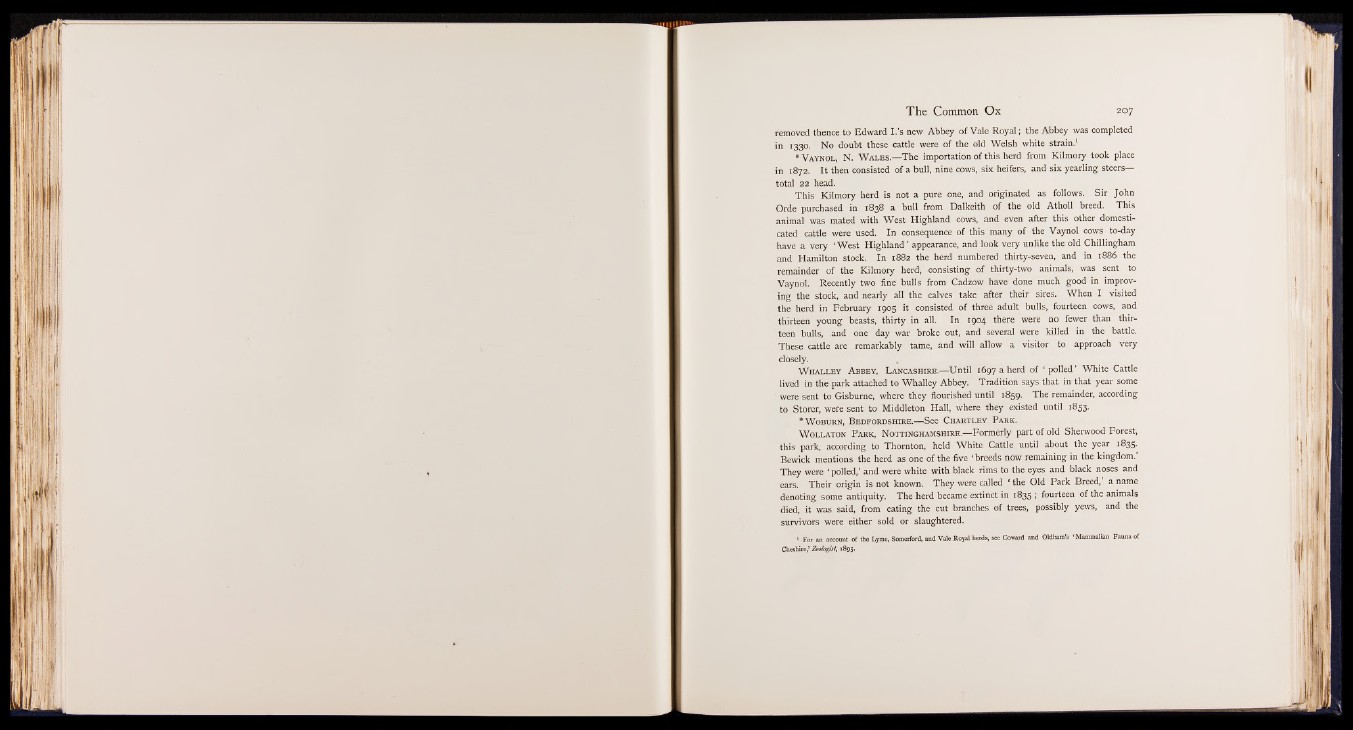
removed thence to Edward I.’s new Abbey of Vale Royal; the Abbey was completed
in 1330. No doubt these cattle were of the old Welsh white strain.1
* V a y n o l , N. W a l e s .— The importation of this herd from Kilmory took place
in 1872. It then consisted of a bull, nine cows, six heifers, and six yearling steers—
total 22 head.
This Kilmory herd is not a pure one, and originated as follows. Sir John
Orde purchased in 1838 a bull from Dalkeith of the old Atholl breed. This
animal was mated with West Highland cows, and even after this other domesticated
cattle were used. In consequence of this many of the Vaynol cows to-day
have a very ‘ West Highland ’ appearance, and look very unlike the old Chillingham
and Hamilton stock. In 1882 the herd numbered thirty-seven, and in 1886 the
remainder of the Kilmory herd, consisting of thirty-two animals, was sent to
Vaynol. Recently two fine bulls from Cadzow have done much good in improving
the stock, and nearly all the calves take after their sires. When I visited
the herd in February 1905 it consisted of three adult bulls, fourteen cows, and
thirteen young beasts, thirty in all. In 1904 there were no fewer than thirteen
bulls, and one day war broke out, and several were killed in the battle.
These cattle are remarkably tame, and will allow a visitor to approach very
closely.
W h a l l e y A b b e y , L a n c a s h i r e .— Until 1697 a herd of ‘ polled’ White Cattle
lived in the park attached to Whalley Abbey. Tradition says that in that year some
were sent to Gisburne, where they flourished until 1859. The remainder, according
to Storer, wefe sent to Middleton Hall, where they existed until 1853-
* W o b u r n , B e d f o r d s h i r e .— See C h a r t l e y P a r k .
W o l l a t o n P a r k , N o t t in g h a m s h i r e .— Formerly part of old Sherwood Forest,
this park, according to Thornton, held White Cattle until about the year 1835.
Bewick mentions the herd as one of the five ‘ breeds now remaining in the kingdom.
They were ‘ polled,’ and were white with black rims to the eyes and black noses and
ears. Their origin is not known. They were called ‘ the Old Park Breed, a name
denoting some antiquity. The herd became extinct in 1835 ; fourteen of the animals
died, it was said, from eating the cut branches of trees, possibly yews, and the
survivors were either sold or slaughtered.
1 For an account of the Lyme, Somerford, and Vale Royal herds, see Coward and Oldham’s ‘Mammalian Fauna of
Cheshire,’ Zoologist, 1895.